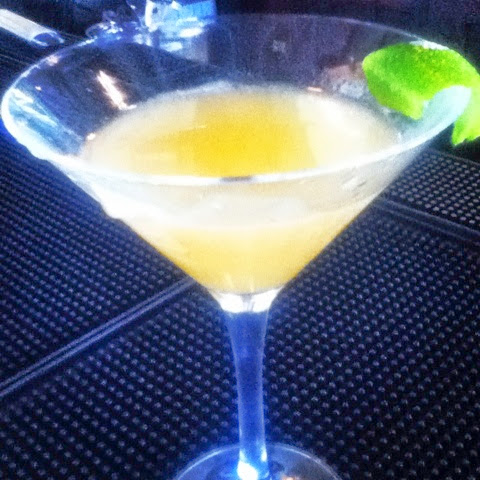 |
| (This is a Martini - the way God intended it to be when he created all of the classic cocktails from the prohibition era.) |
You may have also noticed that I criticize overtly complex cocktails, or cocktails whose purpose is to hide the spirit below the taste of various purées, juices and syrups. The sweet and sour mixture can work quite well in small doses but as is the case with many cocktails, it gets taken too far. Blended cocktails whose juice and sugar content is several times more than the amount of alcohol are an obvious choice of criticism. Firstly, their calorie count is deceptively high, but secondly, you usually wouldn't even know that there's even any alcohol in the drink. Next are the would-be Martinis and Cosmos; cocktails that are only those things in name. I've already written about my grief concerning those drinks. There's more though. Beer cocktails that aren't really cocktails, but instead some kind of shandy. Punch without spirits, or sangrias without wine. The list goes on.
 |
| (Not a classic cocktail, but definitely a classy cocktail - courtesy of Taylor from The Liberty Distillery on Granville Island, Vancouver.) |
This leaves me in a troubling dilemma though. If all of these things are off limits, then what pray tell are the drinks I approve of? Well, classic cocktails have been recounted several times. But I also approve of sours. That is, sour cocktails such as the margarita, whiskey sour, cosmopolitan and mojito. And as far as those high juice content cocktails; those too are acceptable, as long as they contain at least two ounces of alcohol, and no more than three ounces of mix - they should also be crafted with an intent other than to mask the quality of the spirit. Beer cocktails can't be called a cocktail if only juice has been added, much in the same way a sangria needs wine and punch needs a spike of some sort. And then of course there are shooters; fun and inventive in their own right, and as such are acceptable. But there are many more acceptable cocktails, so long as the goal isn't to undermine the distilleries that provided that most important ingredient.
See Also: My first go at Buffalo Trace - a bartender flop
See Also: My first go at Buffalo Trace - a bartender flop
What I'd like to share from this article is that drink crafting is no less an art than cooking, composing or painting (all of which I also do!) Drinks should be considered in their entirety, to the point that every ingredient is working toward the goal - and the goal can never be to cover up the spirit, but instead to add dimension. As a bartender, the ultimate goal should be to provide a drink whose taste and aromas create an experience. Whose appearance helps carry that experience. And whose experience leaves the drinker intrigued, contemplative and satisfied.







No comments:
Post a Comment